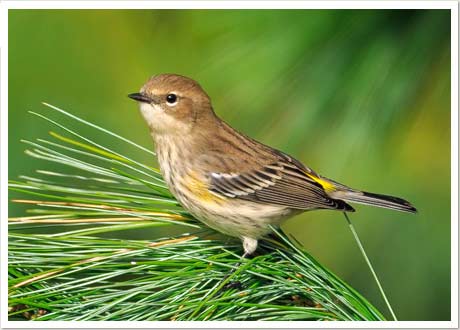|
| Yellow-rumped Warbler |
PHOTO: 1 |
 |
|
 |
 |
| The only warbler to regularly stay in New England for the winter, the Yellow-rumped Warbler is an uncommon visitor to the beach from late September to early spring. Replacing crisp summer plumage with drabber browns and olives, this species can always be told by its bright yellow rump, most-easily seen on birds flying away. You may see small numbers of Yellow-rumped Warblers in the beach's dune scrub feeding on seeds, berries and insects. |
|
|